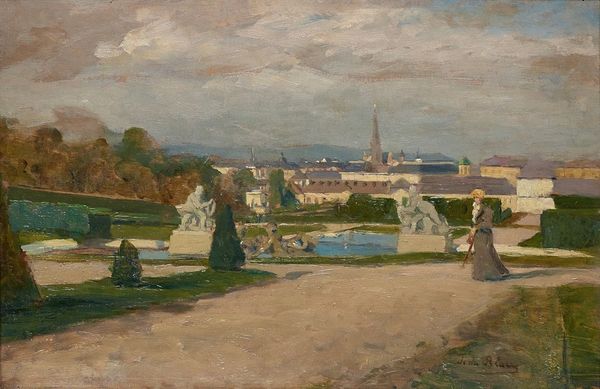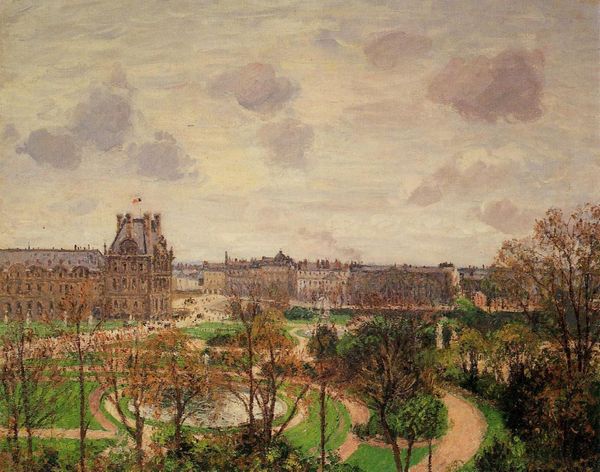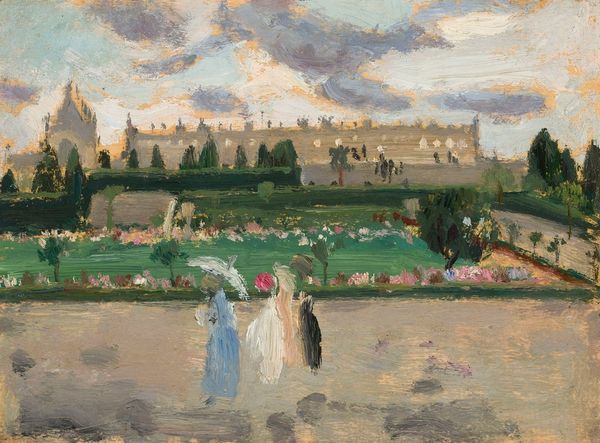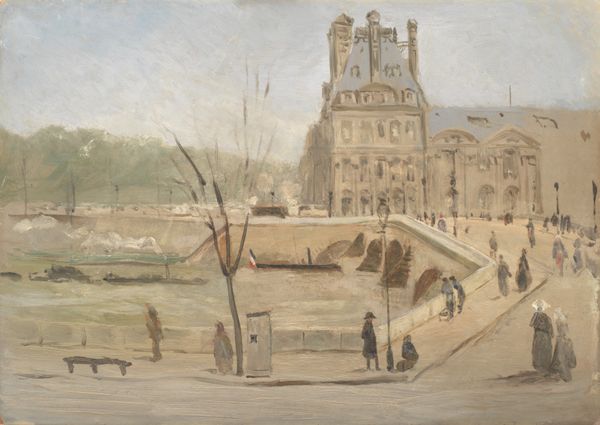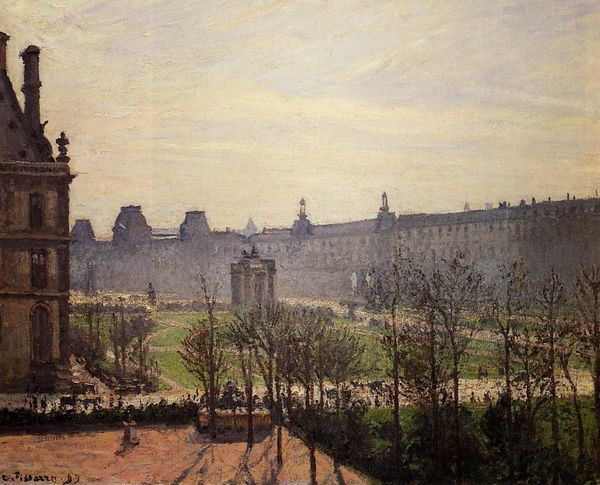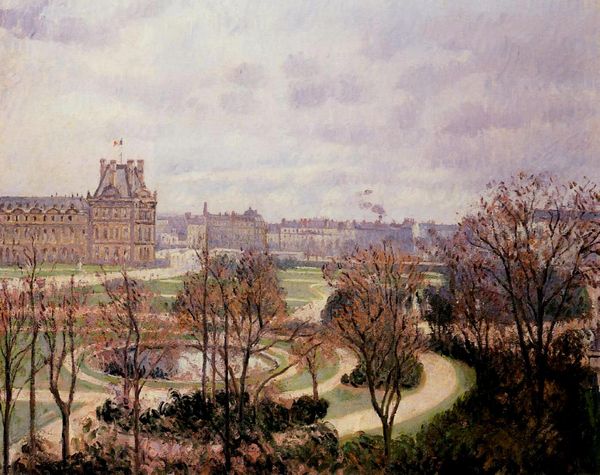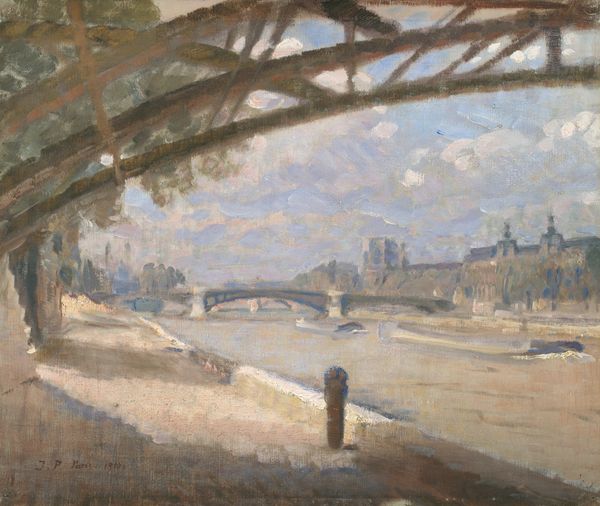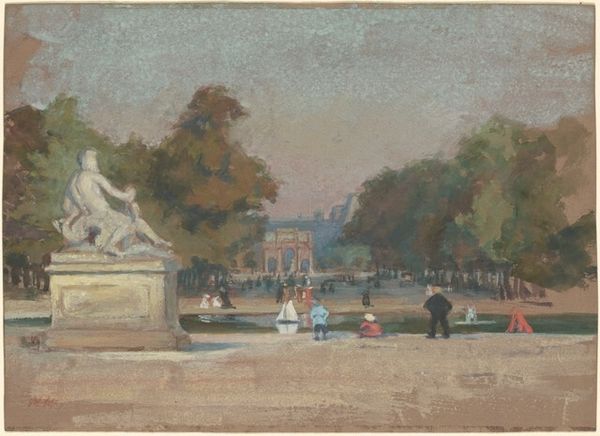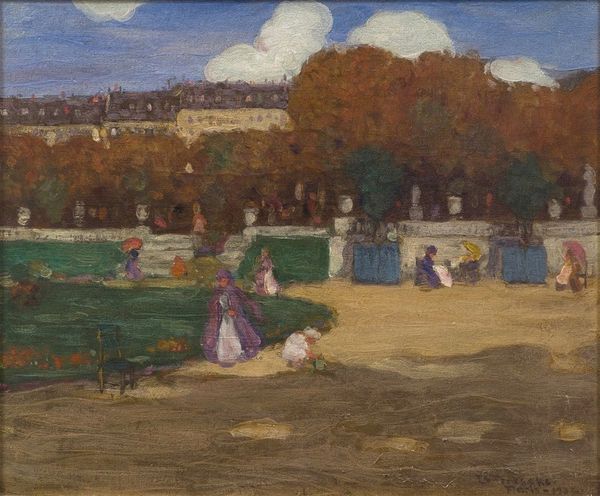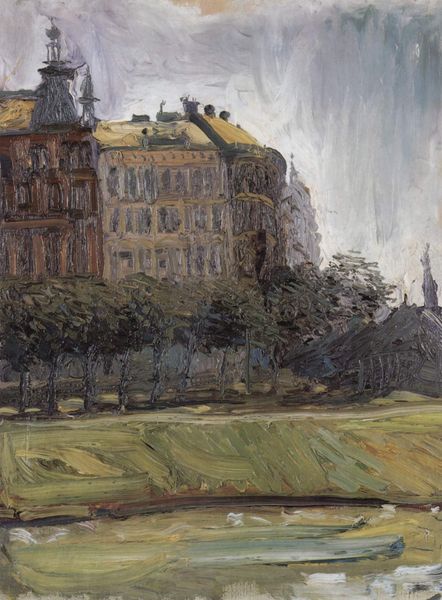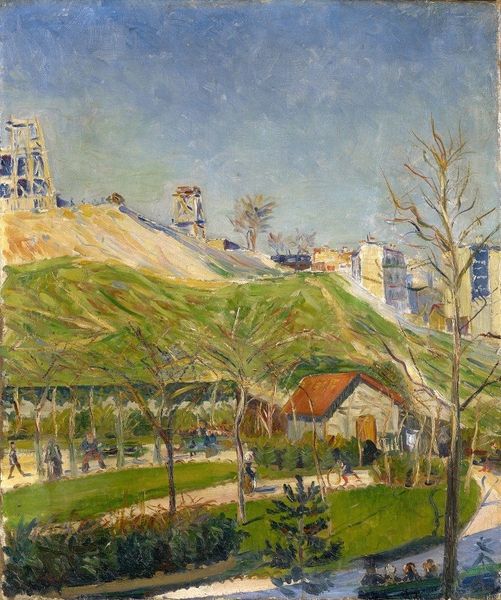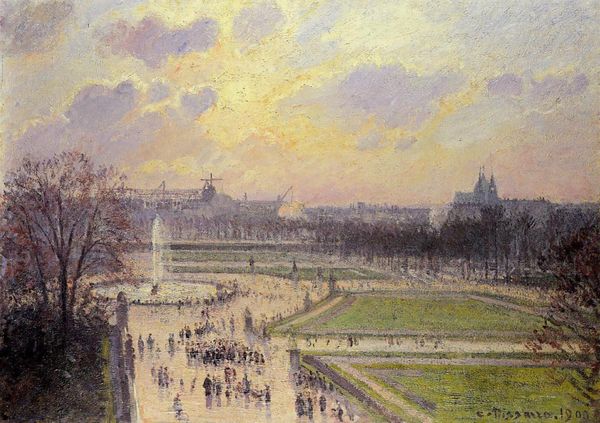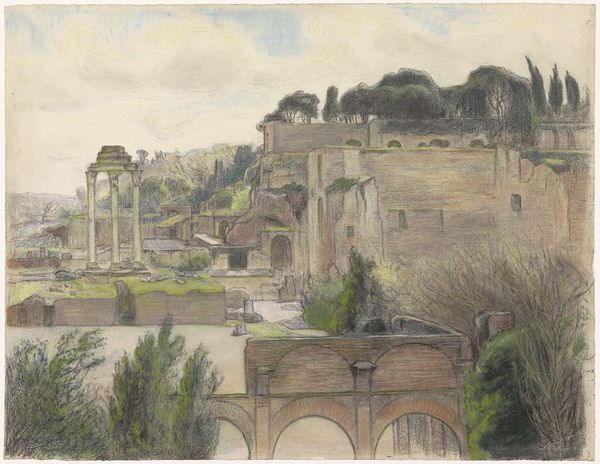
Dimensions: support: 610 x 813 mm
Copyright: CC-BY-NC-ND 4.0 DEED, Photo: Tate
Curator: Alexander Jamieson's "The Tuileries Gardens and the Rue de Rivoli" captures a tranquil, almost hushed corner of Paris. Editor: It has a definite melancholic feel, doesn't it? The muted palette seems to soften the geometric structure. Curator: Indeed. The composition is quite deliberate, notice how the statue on the left provides a visual anchor, leading the eye into the gardens. The balance between figuration and abstraction is noteworthy. Editor: I am curious about the social context here. The Tuileries were a playground for the Parisian elite, a space designed for leisure and display. Jamieson seems to capture that constructed elegance. Curator: Precisely. The brushwork, while loose, creates a subtle sense of order, mirroring the garden's carefully planned layout. The muted tones evoke a sense of fleeting beauty, almost Impressionistic. Editor: It certainly makes me think about how public spaces like these reflect and reinforce social hierarchies through design. Curator: A wonderful point to consider, and the dialogue between structure and tone invites ongoing reflection. Editor: Exactly, and it prompts us to consider who has the right to enjoy and shape such spaces.
Comments
tate 7 months ago
⋮
http://www.tate.org.uk/art/artworks/jamieson-the-tuileries-gardens-and-the-rue-de-rivoli-n04882
Join the conversation
Join millions of artists and users on Artera today and experience the ultimate creative platform.
tate 7 months ago
⋮
Jamieson first went to paint in France in 1895 when he won a scholarship from Glasgow School of Art. From at least the beginning of the century he exhibited views of French towns and harbours, which were enlarged from small studies in oil on panel which he painted directly on the spot. In 1910 he was regarded in the pages of 'Studio' magazine as a leading British Impressionist, and after his exhibition at the Carfax Gallery in 1912 these landscapes were popular. He has since been all but forgotten. Gallery label, August 2004
